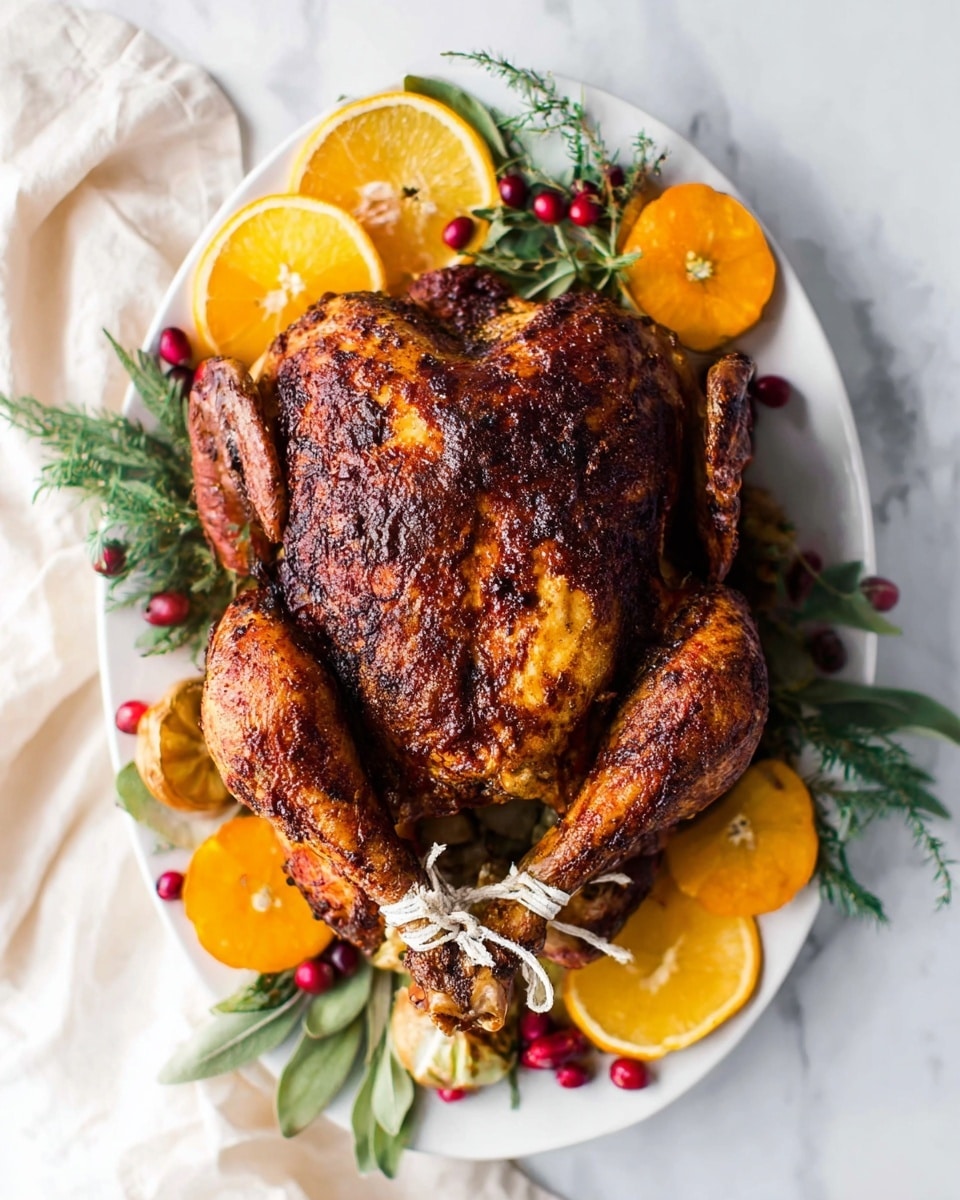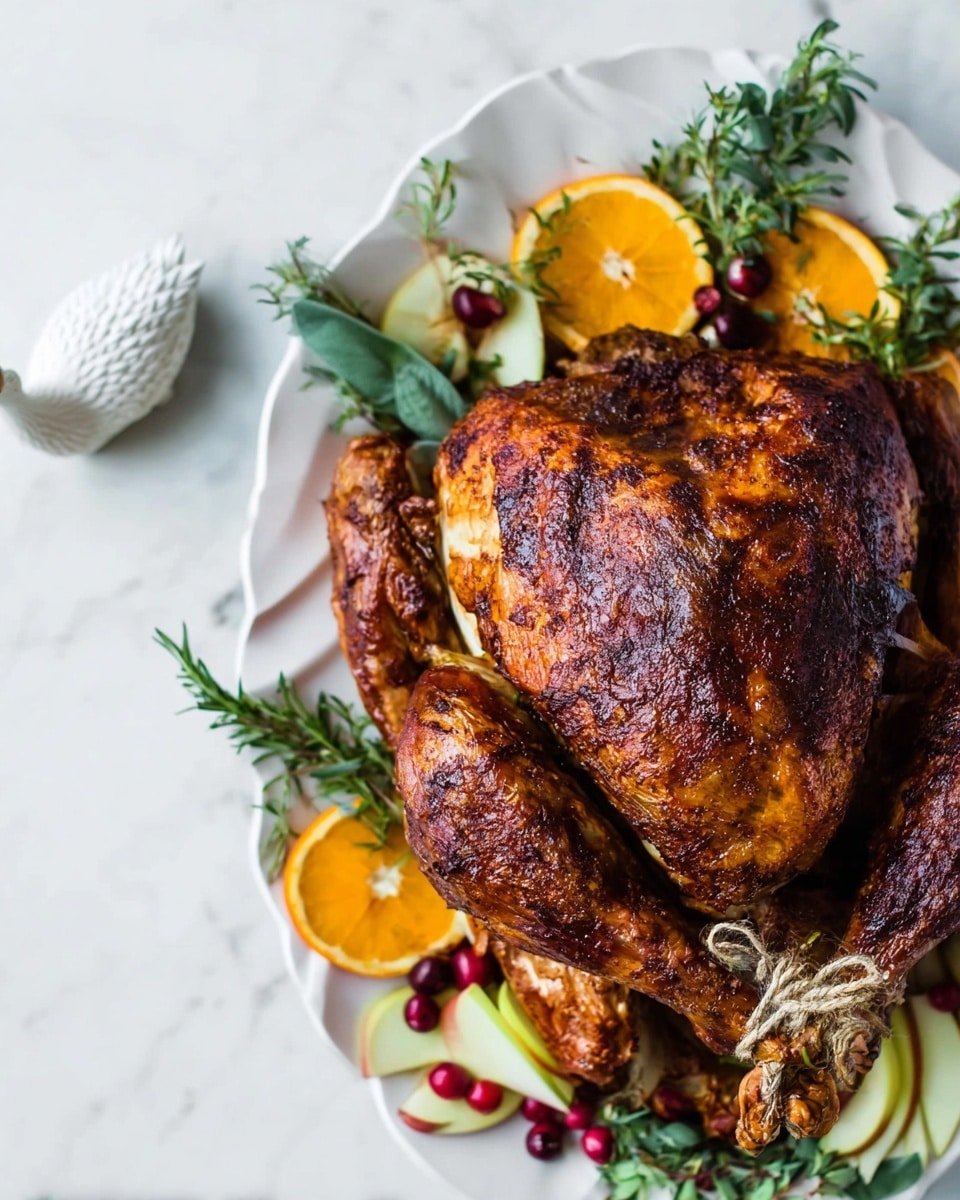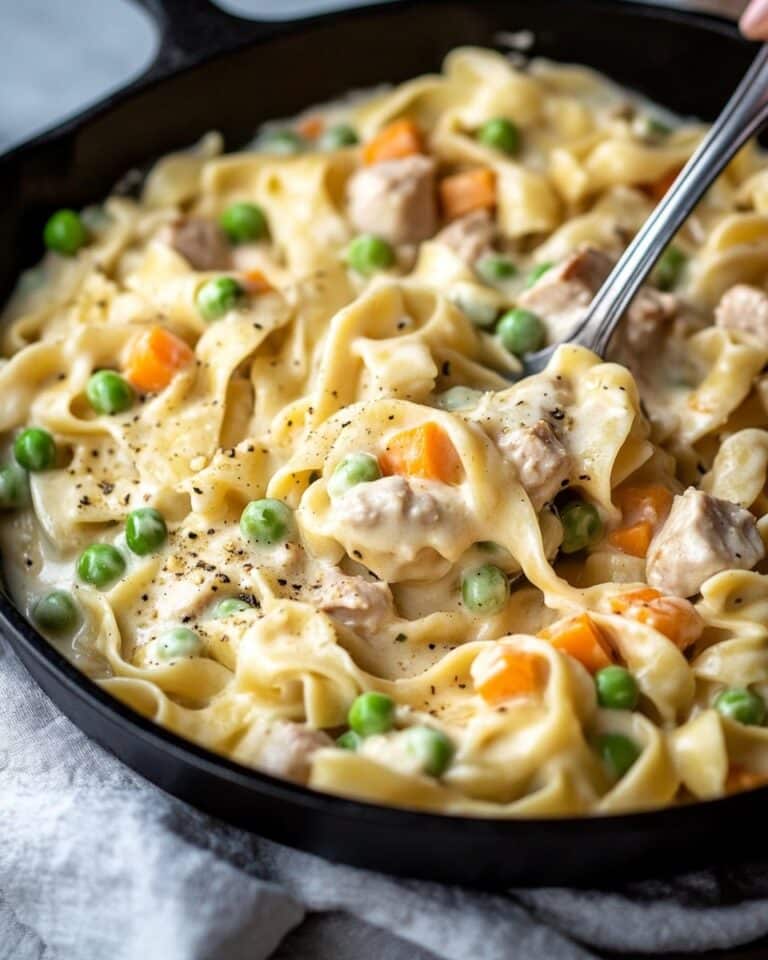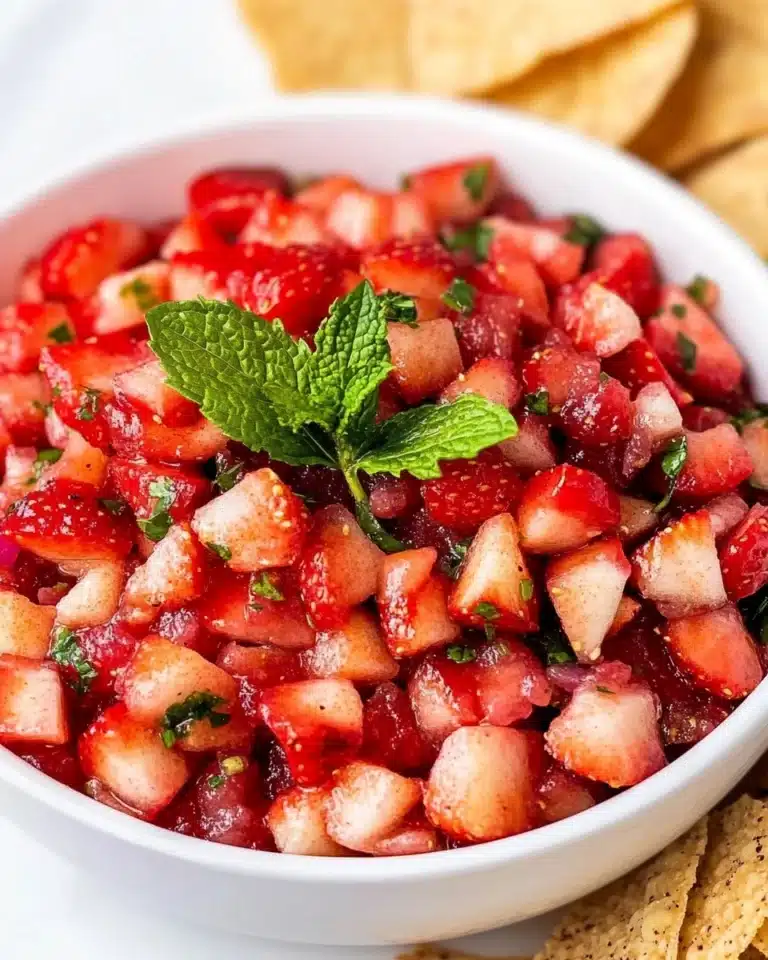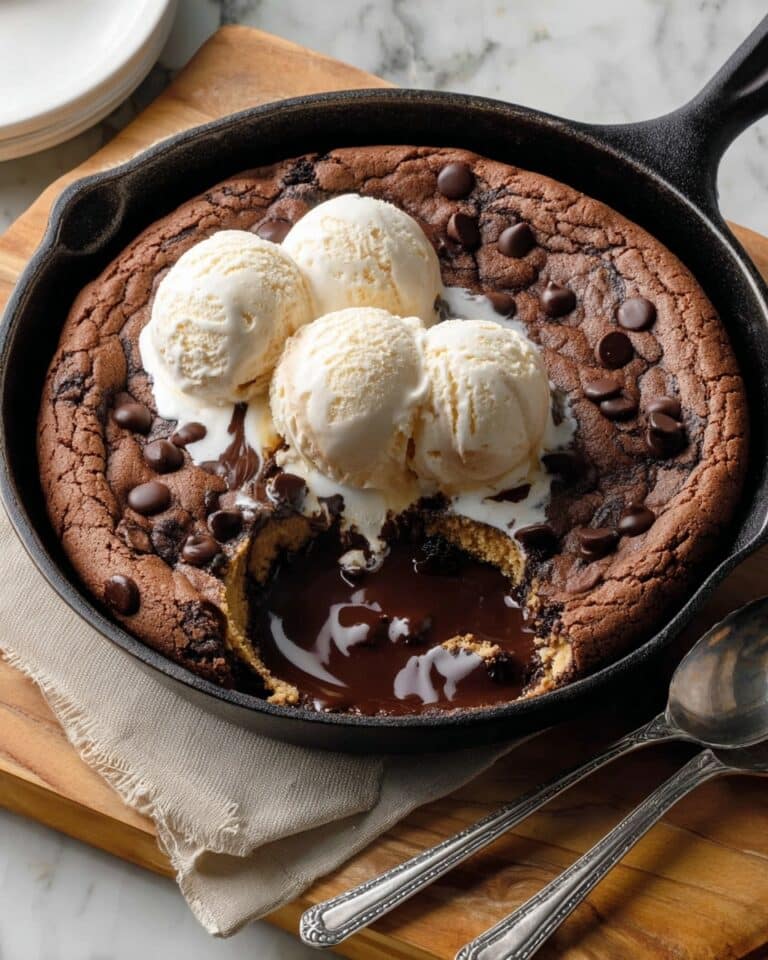If you’re on the hunt for The Best Fried Turkey Recipe, you’ve just struck gold. Trust me, this recipe is a game changer — crispy, flavorful, juicy turkey with a perfect golden crust every single time. Whether you’re frying for a festive occasion or just want to treat your family to something extraordinary, this is the recipe you’ll want in your arsenal. I absolutely love how the layers of spice and the juicy injection come together to make this turkey unforgettable. Stick with me, and I’ll walk you through it all so your turkey turns out exactly right.
Why You’ll Love This Recipe
- Juicy & Flavorful Interior: The injection marinade ensures every bite is extra moist and seasoned deep inside.
- Perfectly Crispy Skin: The spice rub creates a golden, crunchy crust that’s packed with flavor.
- Hands-On Yet Easy Process: You’ll feel like a pro with detailed, approachable steps that set you up for success.
- Ideal for Gatherings: This recipe handles large turkeys beautifully, perfect when feeding a crowd or meal prepping.
Ingredients You’ll Need
To get that signature crispy crust and juicy interior, this recipe uses a combination of a flavorful spice rub and an injected marinade. Each ingredient plays a role — from the smoky paprika to the fresh squeeze of lemon — so I recommend grabbing quality spices to really let those flavors shine through.
- Large Turkey (under 18 lbs): Choose a fresh or fully thawed bird for even frying and safety.
- Peanut Oil: Your go-to for high smoke point and that classic fried taste.
- Chili Powder: Adds a subtle smoky warmth to the rub.
- Paprika: For color and mild earthy flavor.
- Garlic Salt: Enhances savory notes in both rub and marinade.
- Onion Salt: Offers a gentle sweetness and depth.
- Seasoning Salt: A well-seasoned blend that brings it all together.
- Fresh Ground Pepper: Brightens and balances the spices.
- Melted Butter: Locks in moisture and adds richness.
- Oil (Canola or Vegetable): Lightens the marinade and helps carry flavors.
- Worcestershire Sauce: Adds subtle umami complexity.
- Water: Helps in the injection mixture to distribute flavors.
- Fresh Lemon (squeezed): Brightens the marinade with a fresh, zesty note.
- Ground Sage: Classic herb that complements poultry beautifully.
- Dried Thyme: Adds earthy herbal depth to the rub.
Variations
I love playing around with this recipe depending on the occasion. It’s super flexible — customize the spice levels, herbs, or even the type of oil to suit your taste buds or dietary preferences.
- Spicy Kick: Add cayenne pepper or hot paprika to your rub if you like it hotter — my family goes crazy for a little extra heat!
- Herb-Forward: Swap dried thyme with fresh rosemary or tarragon for a slightly different herbal profile.
- Smoky Flavor: Incorporate smoked paprika or a touch of liquid smoke in the marinade for outdoor cookout vibes.
- Oil Substitutes: If peanut allergy is a concern, avocado oil is a great alternative with a high smoke point.
How to Make The Best Fried Turkey Recipe
Step 1: Prep and Inject the Turkey
Start by making sure your turkey is completely thawed — nothing ruins a fried turkey faster than icy spots inside. Rinse and pat it very dry with paper towels; moisture is the enemy of crispy skin. Now for the secret weapon: the injection marinade. Mixing melted butter, oil, Worcestershire sauce, lemon juice, and the seasonings creates a juicy flavor-packed interior. Use a syringe to inject the marinade in just a few key spots around the turkey, moving the needle around inside to distribute it evenly while making as few holes as possible. I discovered this trick after my first dry turkey — it’s a total game changer!
Step 2: Rub it Down and Refrigerate
Mix together all your rub spices in a bowl — chili powder, paprika, garlic salt, onion salt, seasoning salt, pepper, sage, and thyme. Rub this spice blend all over the turkey, including inside the cavity and gently under the skin where you can. This gives the flavor layers and boosts surface crispness. Wrap the turkey tightly in plastic wrap and refrigerate for at least an hour, but if you can, leave it up to 24 hours — this step lets the seasonings really soak in.
Step 3: Prepare Your Frying Setup
Before firing up your fryer, perform the water displacement test to keep things safe: fill your fryer pot with water up to the fill line, then place your turkey in a large airtight bag and submerge it to see how much the water level rises. Mark this new level — this is the amount of peanut oil you’ll use to avoid dangerous overflow. Remove the turkey and dry the pot thoroughly.
Step 4: Heat Oil and Fry the Turkey
Pour peanut oil into your pot up to the marked fill line and begin heating the oil to 275°F. Take your turkey out of the fridge, unwrap, and give it one last pat dry to minimize splatter. Wearing heat-resistant gloves, carefully lower your turkey into the hot oil using a sturdy hook or hanger. Insert your thermometer probe and close the lid. Let the oil temperature rise to 325°F and cook the turkey until its internal temperature hits 165°F. This usually takes about 3-4 minutes per pound, but I always rely on a thermometer — it’s the safest and most accurate method.
Step 5: Rest and Carve
Once cooked, carefully remove the turkey from the oil and let it rest for 20-30 minutes on a wire rack or platter. This resting period locks in those juices and makes carving easier. I always tell my guests to grab their plates, because the smell alone will have them lining up!
Pro Tips for Making The Best Fried Turkey Recipe
- Dry is Your Friend: Pat your turkey dry before frying to get that crackling skin and reduce dangerous oil splatter.
- Injection Matters: Injecting the marinade deep inside keeps the meat juicy, don’t skip or rush this step!
- Thermometer Use: Always use a reliable probe thermometer to avoid under- or overcooking — safety first.
- Oil Level Test: The water displacement test is a lifesaver — it helps prevent dangerous oil spills when you add your turkey.
How to Serve The Best Fried Turkey Recipe
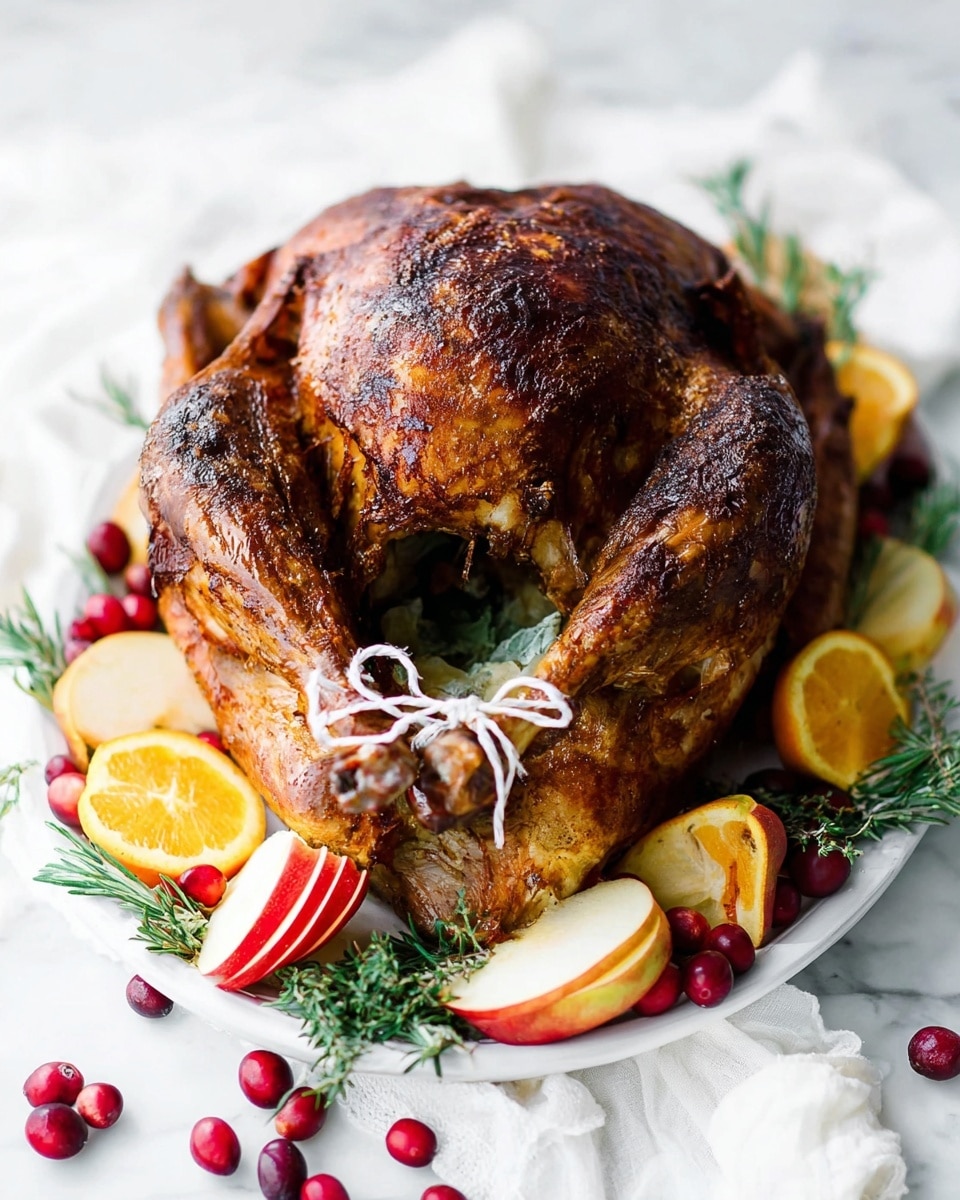
Garnishes
I like to keep it simple with a sprinkle of fresh parsley and lemon wedges on the side. The green adds a pop of color, and a squeeze of lemon brightens up each bite — trust me, your guests will appreciate this little touch.
Side Dishes
My family loves this fried turkey paired with classic sides like garlic mashed potatoes, creamy mac and cheese, and a fresh green bean casserole. For something lighter, roasted Brussels sprouts or a crisp coleslaw add perfect texture balance.
Creative Ways to Present
For special occasions, I’ve laid the turkey on a bed of mixed greens and citrus slices for a festive look. Adding whole roasted garlic heads and sprigs of rosemary around the platter also makes a stunning presentation that’s surprisingly easy.
Make Ahead and Storage
Storing Leftovers
After letting the turkey cool completely, I wrap it tightly in foil or store cut pieces in airtight containers. Leftovers keep beautifully in the fridge for up to 4 days, and you’ll find the flavors actually mellow in a delicious way.
Freezing
Freezing fried turkey works great if you portion it into meal-sized bags first. Just make sure to remove as much air as possible to avoid freezer burn. I usually freeze in glass containers or vacuum-sealed bags and label everything well — makes weeknight meals a breeze!
Reheating
To keep the skin crispy, reheat leftovers in a 350°F oven on a wire rack set over a baking sheet until warmed through. Microwaving is fine for speed, but you’ll lose that crunch, which is my favorite part — so if you have time, go for the oven method.
FAQs
-
Can I fry a turkey that weighs more than 18 pounds?
It’s best to keep your turkey under 18 pounds for frying — larger birds take longer to cook and are harder to submerge safely in the oil. If you have a bigger bird, consider spatchcocking it or slicing into smaller parts for frying.
-
What’s the safest way to fry a turkey outdoors?
Always fry outside on a flat, non-flammable surface away from buildings or flammable materials. Keep a fire extinguisher nearby, wear protective gear, and never leave the hot oil unattended. The water displacement test also helps avoid oil overflow hazards.
-
How do I know when my fried turkey is done?
The best way is using a meat thermometer. Insert it into the thickest part of the thigh — the turkey is safe to eat when it reaches 165°F internal temperature.
-
Can I use other oils besides peanut oil?
Peanut oil is preferred for its high smoke point and neutral taste, but you can substitute canola or avocado oil if needed. Just make sure to use oils with smoke points above 350°F to avoid burning.
-
How long in advance can I brine and rub my turkey?
This recipe calls for refrigerating the rubbed turkey anywhere from 1 hour up to 24 hours. The longer you refrigerate, the deeper the flavors penetrate, so if time allows, overnight is ideal.
Final Thoughts
I have to say, discovering this fried turkey recipe was a revelation. I used to struggle every year trying to get that perfect crispy skin without drying out the meat. Now, this method’s my go-to, especially when feeding a crowd — it’s like hosting a party with an instant ‘wow’ factor. If you try it once, I promise you’ll want to make The Best Fried Turkey Recipe every holiday or special weekend. So go ahead, get your oil ready, and enjoy a turkey that your family and friends will rave about long after the last slice is gone.
Print
The Best Fried Turkey Recipe
- Prep Time: 1440 min
- Cook Time: 20 min
- Total Time: 1460 min
- Yield: 22 servings
- Category: Main Course
- Method: Frying
- Cuisine: American
Description
This recipe provides a detailed guide to making the best fried turkey, featuring a flavorful injection marinade and a robust spice rub. It ensures a juicy, tender bird with a crispy exterior by combining marinating and deep-frying techniques using peanut oil.
Ingredients
Turkey and Oil
- 1 large turkey (under 18 lbs)
- 3 gallons peanut oil
Injection Marinade
- 1/4 cup melted butter
- 1/4 cup oil (canola or vegetable)
- 3 tbsp Worcestershire sauce
- 1/4 cup water
- 1/2 large lemon (fresh, squeezed)
- 1 teaspoon ground sage
- 1 teaspoon dried thyme
- 1 teaspoon garlic salt
- 1 teaspoon onion salt
Rub Spices
- 1 tbsp chili powder
- 1 tbsp paprika
- 1 tbsp garlic salt
- 1 tbsp onion salt
- 1 tbsp seasoning salt
- 1 teaspoon fresh ground pepper
Instructions
- Thaw and Prepare Turkey: Thaw your turkey completely, rinse it, and pat dry to remove any excess moisture before applying marinade.
- Inject Marinade: Mix all injection marinade ingredients together and fill an injector syringe. Poke one small hole in the turkey and slowly inject marinade into different parts of the bird, moving the needle carefully to distribute it evenly while minimizing holes.
- Apply Spice Rub: Combine all rub spices and rub the mixture all over the turkey, including inside the cavity and under the skin to maximize flavor absorption. Wrap the turkey completely in cling wrap and refrigerate for 1 to 24 hours, with longer marinating time enhancing flavor.
- Prepare Oil and Pot: When ready to fry, fill the pot with water to the first fill line. Place the turkey in an airtight bag and submerge it in the water to determine the correct oil fill level to prevent overflow when frying. Mark this water line, then dry the pot.
- Add Oil and Heat: Pour peanut oil to the marked line in the pot. Preheat the oil to 275°F (135°C).
- Dry and Lower Turkey into Oil: Remove the turkey from the refrigerating wrap and pat it dry again thoroughly. When the oil reaches 275°F, carefully lower the turkey into the oil using the hanger or hook, wearing protective gloves to prevent burns from splattering oil.
- Fry Turkey: Insert a thermometer probe into the turkey and close the lid. Allow the oil temperature to rise to 325°F (163°C) and continue cooking the turkey until the internal temperature reaches 165°F (74°C) for safe consumption.
- Rest and Serve: Remove the turkey from the oil and let it rest for 20 to 30 minutes before carving. This resting period allows juices to redistribute, ensuring moist meat.
Notes
- Life-altering, literally THE BEST fried turkey recipe you will ever eat.
- Step-by-step instructions ensure a perfectly cooked bird every time.
- The combination of injection marinade and spice rub adds deep, vibrant flavor.
- Wear protective gloves and be cautious when lowering the turkey into hot oil to avoid burns.
- Ensure the turkey is completely thawed and dry to prevent oil splatter and accidents.
Nutrition
- Serving Size: 1 serving
- Calories: 211 kcal
- Sugar: 1 g
- Sodium: 650 mg
- Fat: 11 g
- Saturated Fat: 3 g
- Unsaturated Fat: 7 g
- Trans Fat: 0 g
- Carbohydrates: 1 g
- Fiber: 1 g
- Protein: 25 g
- Cholesterol: 90 mg

